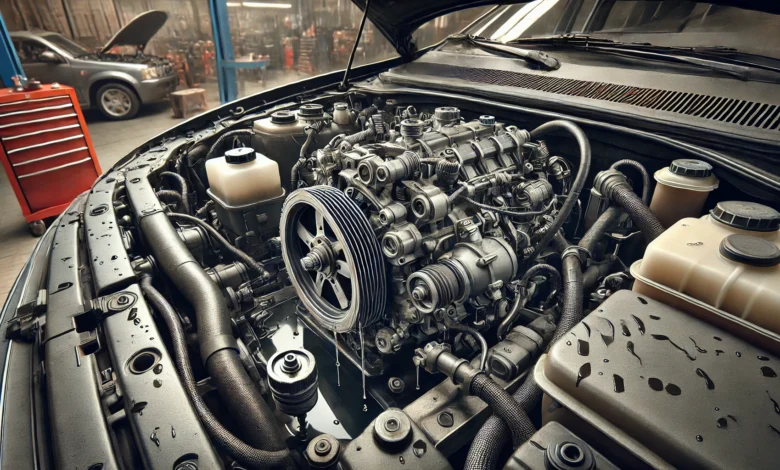How Long Can You Drive with a Bad Power Steering Pump?

Dealing with a bad power steering pump can be frustrating, especially if you rely heavily on your vehicle for daily commutes or long trips. The power steering pump plays a crucial role in ensuring that you can steer your vehicle smoothly with minimal effort. When it starts to fail, you might notice some troubling signs, and the question arises: how long can you continue driving with a bad power steering pump?
Understanding the Role of the Power Steering Pump
Before diving into how long you can drive with a failing power steering pump, it’s important to understand its function. The power steering pump is responsible for generating the hydraulic pressure needed to assist in steering. It allows you to turn the wheel with ease, even at low speeds. Without a properly functioning pump, steering becomes increasingly difficult, especially during maneuvers like parking or making tight turns.
Signs of a Failing Power Steering Pump
Identifying the signs of a bad power steering pump early on can help prevent further damage to your vehicle. Here are some common symptoms to watch out for:
- Whining or groaning noise: A failing pump often produces a distinct whining or groaning noise when you turn the steering wheel. This is usually a sign that the pump is struggling to generate the necessary hydraulic pressure.
- Stiff steering wheel: If you notice that your steering wheel is becoming harder to turn, especially at low speeds, it could indicate that your power steering pump is on its way out.
- Leaking power steering fluid: The pump relies on power steering fluid to function correctly. If you see puddles of fluid under your vehicle or notice a drop in fluid levels, there might be a leak in the pump or the hoses connected to it.
- Vibration or jerking: When the power steering pump starts to fail, you might experience vibrations or jerking motions when you turn the steering wheel.
How Long Can You Drive with a Bad Power Steering Pump?
The duration you can drive with a bad power steering pump varies depending on the severity of the problem and how long you’re willing to tolerate the symptoms. In some cases, you might be able to drive for several weeks, while in others, the pump could fail entirely within a few days.
- Minor issues: If the pump is only slightly damaged and you’re experiencing mild symptoms, you might be able to drive for a few hundred miles. However, keep in mind that the situation could deteriorate quickly, especially if the pump is leaking fluid.
- Worsening symptoms: As the pump’s condition worsens, steering will become more challenging, and the noise will likely get louder. Driving with a failing pump at this stage is risky, as it can suddenly give out, making it difficult or even impossible to steer.
- Complete failure: Once the power steering pump fails entirely, you’ll lose all power steering assistance. Driving without power steering is not only dangerous but also puts additional strain on other components, such as the steering rack and belt. At this point, it’s critical to have the pump replaced immediately to avoid a potential accident.
Risks of Driving with a Bad Power Steering Pump
While it might be tempting to keep driving with a failing power steering pump, doing so comes with significant risks:
- Loss of control: If the pump fails completely, you could lose control of the vehicle, especially at low speeds or when making sharp turns. This could lead to accidents, putting you and others at risk.
- Increased wear and tear: Driving with a bad power steering pump can cause additional wear and tear on other components of your steering system, leading to more expensive repairs in the future.
- Potential breakdown: A completely failed pump can lead to a breakdown, leaving you stranded in the middle of the road. Towing and emergency repairs are not only inconvenient but also costly.
What to Do If Your Power Steering Pump Is Failing
If you suspect that your power steering pump is failing, it’s best to address the issue as soon as possible. Here are a few steps you can take:
- Check the fluid levels: Low power steering fluid can exacerbate pump problems. Topping off the fluid might temporarily alleviate some symptoms, but it won’t fix the underlying issue.
- Avoid aggressive driving: Try to avoid sharp turns or sudden maneuvers that put extra strain on the pump.
- Schedule a repair: As soon as you notice symptoms of a failing power steering pump, it’s wise to have it inspected by a mechanic. The sooner you address the problem, the less likely you are to experience a complete pump failure.
Conclusion
While you might be able to drive for a short period with a bad power steering pump, doing so is not advisable. The risks associated with a failing pump far outweigh the temporary convenience of putting off repairs. If you notice any symptoms of a bad power steering pump, it’s best to have it checked and replaced as soon as possible to ensure your safety on the road. Remember, addressing the issue early can save you from more significant problems and expensive repairs down the line.










